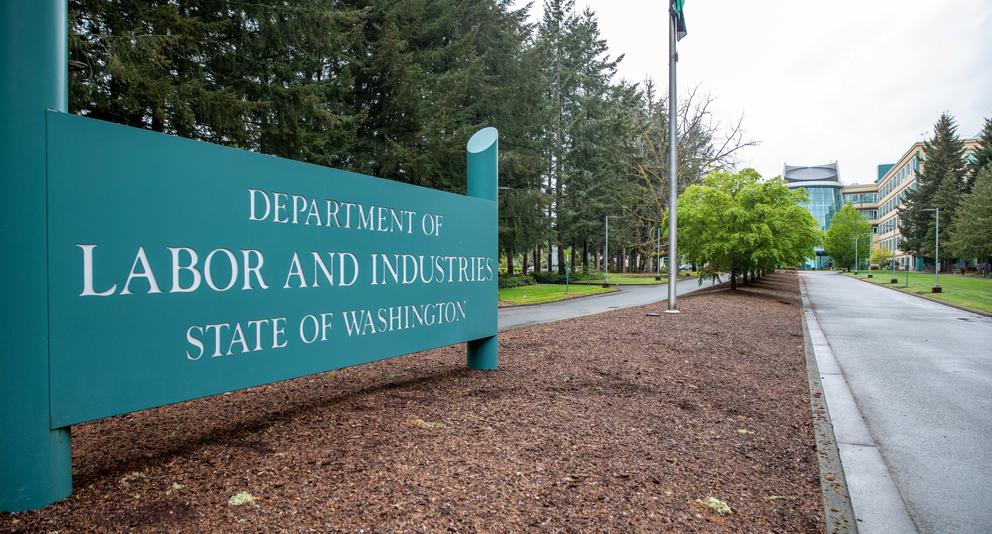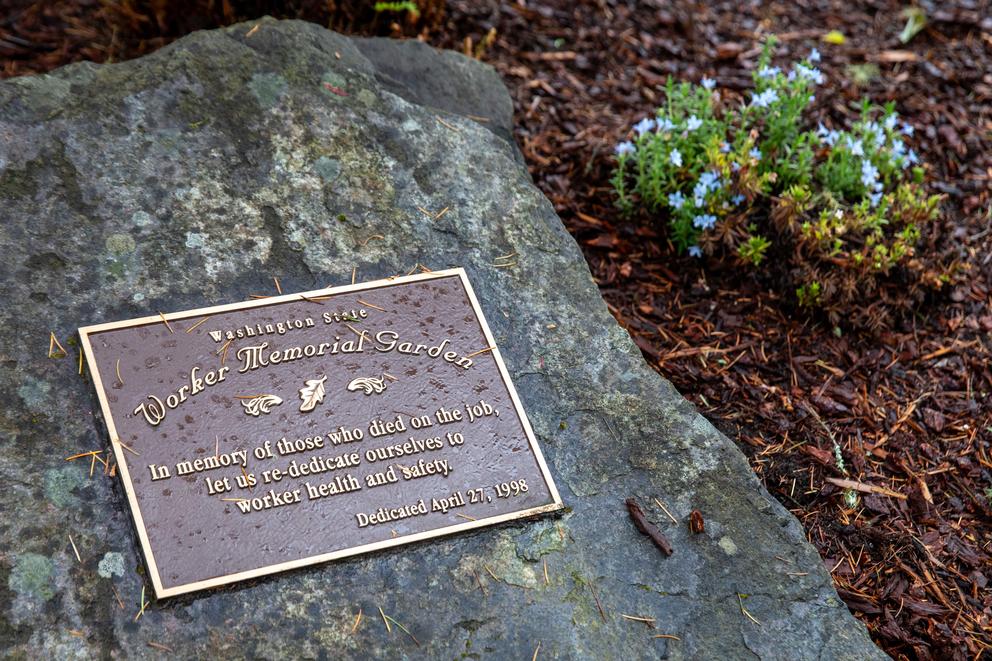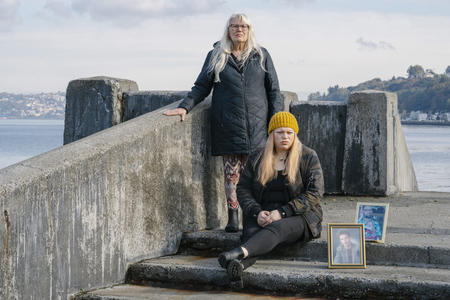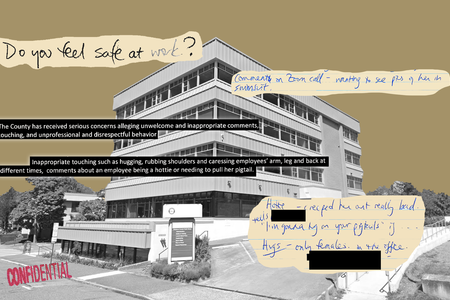More than 600 days later, records showed safety officers from the state’s Department of Labor & Industries had yet to reinspect a worksite of the Kent-based general contractor.
For Seasoft Scuba, it’s been four years without a return visit from L&I after the company made the severe violator list in February 2020 for the unsafe handling of lead.
A Cascade PBS analysis of L&I records found that safety officers have not returned to inspect the worksites of more than a third of companies that have been labeled a “severe violator” over the past five years.
Most of the subsequent visits to severe violator companies resulted from new complaints or referrals based on potentially hazardous working conditions — not from the enhanced attention required as part of their violation status.
L&I launched the Severe Violation Enforcement Program in 2011 to track companies with “willful” or repeat serious citations due to a fatality or hospitalization. More than one willful or repeat serious citation stemming from hazards with a high severity and probability rate of injury can also land employers on the list, as can any “egregious” violations.
This story is part of Cascade PBS’s WA Workplace Watch, an investigative project covering worker safety and labor in Washington state.
Craig Blackwood, the assistant director of L&I’s safety division, has said the program targets employers who demonstrate disregard for the safety and health of their employees. The program aims to focus resources on employers who are “resistant or indifferent” to enforcement activities, according to the program’s manual. It also helps officials share information on repeat violators who work in several states.
Severe violator companies range from massive corporations like Boeing to small contractors. L&I has added 121 employers to the program since it started, according to agency data. Officials later removed 37 companies after their citations were modified. Six entities have met the criteria to be removed. Currently, 78 businesses remain on the list. Some have made the list multiple times.
L&I data shows officials added 22 employers to the list in fiscal year 2023, twice as many as in any previous year.
Matt Ludwick, L&I’s deputy statewide compliance manager, said the program is intended as a deterrent to encourage companies to keep workers safe.
“It’s somewhat effective,” he said. “It’s not as effective as it could be.”
AAA Contractors contested the fines and later settled with L&I in 2023 over the citations that had landed them on the list, according to agency documents. The settlement included a 75% reduction of their fines. L&I often reduces financial penalties as part of its appeals process.
AAA Contractors did not respond to multiple messages seeking comment for this story.
Seasoft Scuba, which makes scuba gear such as leaded weights, also received hundreds of thousands of dollars in fines from the Washington State Department of Ecology for unsafe handling of lead. Those violations landed the Chehalis-based company on the list four years ago, but owner Bruce Justinen said he has received little help from L&I or Ecology since then.
“I didn’t know that you couldn’t clean up lead with soap and water until after the third visit from L&I,” he said, adding, “They don’t have my best interest at heart.”
Justinen confirmed that L&I officials have not returned to his worksite since the company was put on the severe violator list, but the classification still leaves him terrified.
“We expect them every day,” he said. “There’s a constant tension of stress because they could come through the door and fine you.”
Find tools and resources in Cascade PBS’s Check Your Work guide to search workplace safety records and complaints for businesses in your community.
Less than 5% of those companies added to the list since 2019 have been subject to a specific “follow-up” inspection to ensure the hazards have been abated, according to L&I documents.
Rather, it’s usually a safety complaint or tip that brings L&I back to a job site of a severe violator, not a planned “follow-up” inspection. As happened in the case of Allways Roofing, a company which has made the list eight times in the past five years — the most of any in the state. Since the company was labeled a severe violator, L&I has not conducted any specific “follow-up” inspections.
The 13 inspections that have occurred since the company first landed on the list were all spurred by complaints or referrals from the public or from L&I employees after workers were reportedly seen on roofs without using fall protection, according to L&I documents.
“Thirteen inspections in that time frame is a significantly higher rate of inspection than the average company,” said Matt Ross, a spokesperson for L&I, in response to questions from Cascade PBS. “So when a company is being inspected frequently just based on referrals alone, doing additional follow-up inspections isn’t an efficient or effective means of increasing scrutiny or worker safety.”
Ross added that “follow-up” inspections and inspections triggered by a referral or complaint perform the same function, but the latter type takes priority.
In the past eight years, at least 18 Allways Roofing workers have been injured on the job, including three falls from roofs, according to an L&I press release. During that same period, L&I issued the company 96 citations – many for workers not using fall or eye protection – accompanied by $4.1 million in fines.
The company has paid $132,000 toward those fines, according to L&I, and also owes the agency $21,339 in workers’ compensation premiums and $9,000 in contractor registration infractions.
“Clearly, Allways Roofing is undeterred in their willingness to put profit ahead of worker safety,” Ross said. “We don’t believe that means SVEP is ineffective in every case.”
John Ovak, owner of Allways Roofing, told Cascade PBS in a text message that the company has not had any work since January.
“L&I put me out of business and put employees out of work,” he wrote.
Ovak said he spent tens of thousands of dollars training workers, but “at the end of the day if I leave a job and they take their rope off their harness, I get the fine [and] they don’t.”
Nine companies, including Allways Roofing, have been added twice or more.
L&I’s Ludwick said finding the work sites of construction companies or other contractors can pose a significant challenge for conducting follow-up inspections.
“They’re out at different work sites,” he said. “For those, literally the best way for us to get to them is through a complaint or a referral, or the inspectors out driving around.”
Records show construction companies make up about 70% of the severe violators.
An L&I report by its research arm, the Safety and Health Assessment and Research for Prevention program, also known as SHARP, found inspections “make substantial contributions” to reducing rates of workplace injury and illness.
For companies on the severe violator list, Martin Cohen, a teaching professor in the University of Washington’s Department of Environmental and Occupational Health Sciences, said it’s important to conduct follow-up inspections.
“It just makes sense to follow up,” Cohen said. “It may take the wind out of the sail of something called a Severe Violators Enforcement Program, if you’re not really treating it as such.”
Cohen, who for a decade worked for SHARP, suggests that the agency engage companies more to understand why they keep getting violations.
Boeing, one of the state’s biggest employers, made the list in 2022 after multiple citations for marking holes on its manufacturing floors with yellow warning cones rather than with a cover or guardrail system as required by safety laws. The repeat citation came with a $8,800 fine. Boeing is contesting the citation and fine. The company declined to comment.
Companies remain on the list for at least three years. To be removed, all previously identified safety hazards must be fixed, all fines need to be paid and L&I needs to conduct a follow-up inspection, according to L&I documents.
L&I officials updated the program’s rules in May 2023 to impose a deadline for conducting a follow-up inspection: two to three months after a citation is finalized and the company has had a chance to appeal. The two companies that would have qualified for a follow-up inspection within the new deadline have both ceased operations in the state.
Ludwick said L&I also initiated a new process this month to provide compliance managers with a monthly list of companies in their region that are due for a follow-up.
“It’s something that’s been needing to be done,” he said. “It’s been a bit of frustration for us.”
Get the latest investigative news
A newsletter for resources, data and behind-the-scenes insight into investigative efforts.








